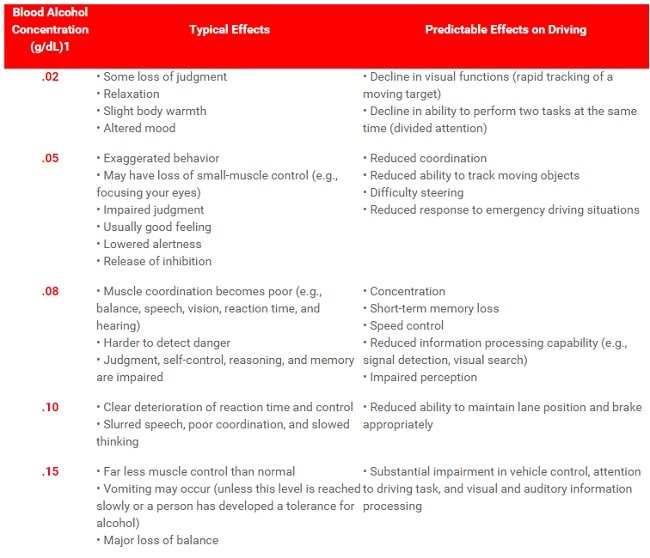Drink Driving: How Alcohol Affects a Driver's Abilities

Highlights
1. Driving under the influence of alcohol can lead to:
- Alcohol abates the senses, and consequently impairs judgment and dulls reaction time. It diminishes inhibitions and leads one to deem a potentially hazardous situation as safe
- Drink driving can cause accidents that cause severe injuries like broken bones, organ damage, and paralysis. The recovery time for such injuries, if not life threatening, often stretches over a long period
- The most severe consequence is death, and more often than not, the victim(s) is the occupant, cyclist or the pedestrian
2. Blood Alcohol Content (BAC) and its effects on driving:
- About 20mg of alcohol per 100ml of blood negatively affects visual functions
- 50mg/ 100ml of blood leads to difficulty in co-ordination, and abated response time
- A BAC level of 0.08 causes lowered concentration, inability to control speed, and debilitated awareness
- At 0.10, a driver's ability to brake is severely affected
- With a BAC level of 0.15, the driver's competence is critically damaged, and affects his/ her ability to pay attention and control the vehicle

(Image source: madd.org)
3. Legal consequences:
- According to drink driving laws in India, the permissible limit for blood alcohol content (BAC) is 30mg per 100ml of blood. The punishment for the drink driving offense comprises imprisonment and/ or a monetary
- The first offense does not necessarily lead to suspension/ cancellation of the driving license, but consequent offenses may lead authorities to cancel one's license
- Recent development in Delhi has lead to the recommendation of driving licenses being cancelled upon the first offense
- The Road Safety and Transport Bill, which is yet to be passed in the parliament, recommends reduction of the permissible BAC to 20mg of alcohol per 100ml of blood from 30mg. This would mean a pint of beer 330ml will send one's BAC over 20mg level
Also Read: Technology That Won't Let You Drive Drunk
Last Updated on June 23, 2015











